Secret Societies and Mystery Cults in Ancient Rome were religious groups with exclusive membership, secret initiation rites, and worship of gods often outside the official Roman pantheon. These groups offered personal, emotionally intense spiritual experiences that were very different from the public, state-controlled rituals typical of Roman religion.
Ancient Rome had a wide variety of religious beliefs, combining traditional Roman state worship with imported cults and local practices. The official religion focused on duty to gods as protectors of the state, while secret societies provided individual salvation and mystical knowledge.
The main characteristics of these groups are:
- Exclusive membership limited to initiates
- Hidden rituals known only to insiders
- Symbolic ceremonies centered on death, rebirth, or divine mysteries
In ancient societies, secret initiation rites held great importance. They created a sense of belonging, ensured loyalty, and marked significant spiritual journeys for participants. This secrecy also made Roman authorities suspicious, as they were wary of potential political or social threats posed by these cults.
Despite the seriousness of these secret societies, Ancient Rome’s broader culture was filled with various forms of entertainment and public spectacle. From gladiatorial games to chariot races and theatrical performances, the spectacle of ancient Rome played a crucial role in society. This involvement wasn’t just for enjoyment; it had significant effects on social relationships and political authority.
The legal framework within which these societies operated also played a significant role in their functioning. The Twelve Tables, created between 451-450 BCE, were the first attempt to codify the complex and often arbitrary legal practices of ancient Rome. These laws significantly shaped Roman legal systems.
Additionally, the legacy of Ancient Rome continues to influence modern society in various ways. From its beginnings as a small city-state to its growth into a vast empire, the legacy of Ancient Rome remains a cornerstone of Western civilization.
The legal status of different societal groups, including women, further adds to the complexity of ancient Roman society. The article on the legal status of Roman women provides an insightful exploration into their rights and restrictions which significantly influenced gender dynamics in ancient Rome.
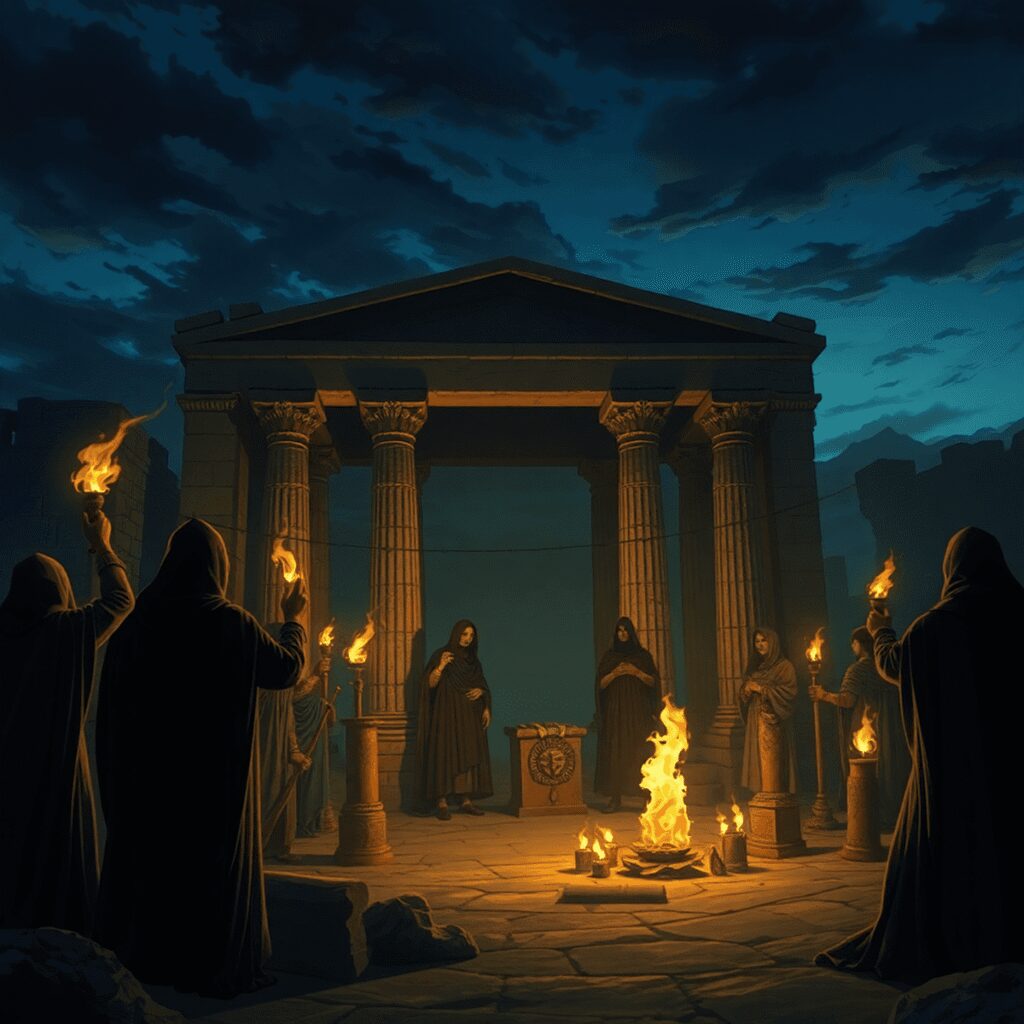
Ancient Roman Religion and State Worship
The religious practices of the Romans were not merely a set of beliefs but a comprehensive system that intertwined with every aspect of their lives. Roman religion was a complex system deeply embedded in the social and political fabric of the empire. It combined indigenous Italian beliefs with Greek influences, creating a rich pantheon of gods and spirits responsible for various aspects of life and nature. This religious framework was not just personal or communal but was intrinsically tied to the state’s well-being.
Key features of Roman religion include:
- Emphasis on duty (pietas): Romans saw religious observance as a civic duty essential to maintaining pax deorum—the peace of the gods—which ensured prosperity and stability.
- Ritual precision: Public ceremonies were conducted with exacting rituals performed by priests, magistrates, and even emperors to honor deities such as Jupiter, Mars, Venus, and many others.
- State-sanctioned worship: The government controlled religious practices, endorsing certain cults while suppressing others perceived as threats to public order or morality.
Religious festivals, sacrifices, and auguries were regularly held to secure divine favor for military campaigns, agriculture, and governance. This tight relationship between religion and state meant that personal belief was often secondary to collective ritual compliance. Secret societies and mystery cults stood apart from this official structure by offering more intimate, emotional spiritual experiences not governed by state authority.
The Roman Republic, existing from 509 to 27 BCE, marked a significant transition in governance from monarchy to a complex political structure. This system laid the foundation for modern democracies and established key principles of governance that resonate today.
Moreover, agriculture played a vital role during this period as it was a crucial driver of Rome’s economic and social development. This sector extended beyond mere food production; it was integral to the overall prosperity of the empire.
Lastly, understanding daily life in Ancient Rome reveals much about its social class divide. Daily activities, traditions, and ways of living varied vastly between social classes such as patricians and plebeians.
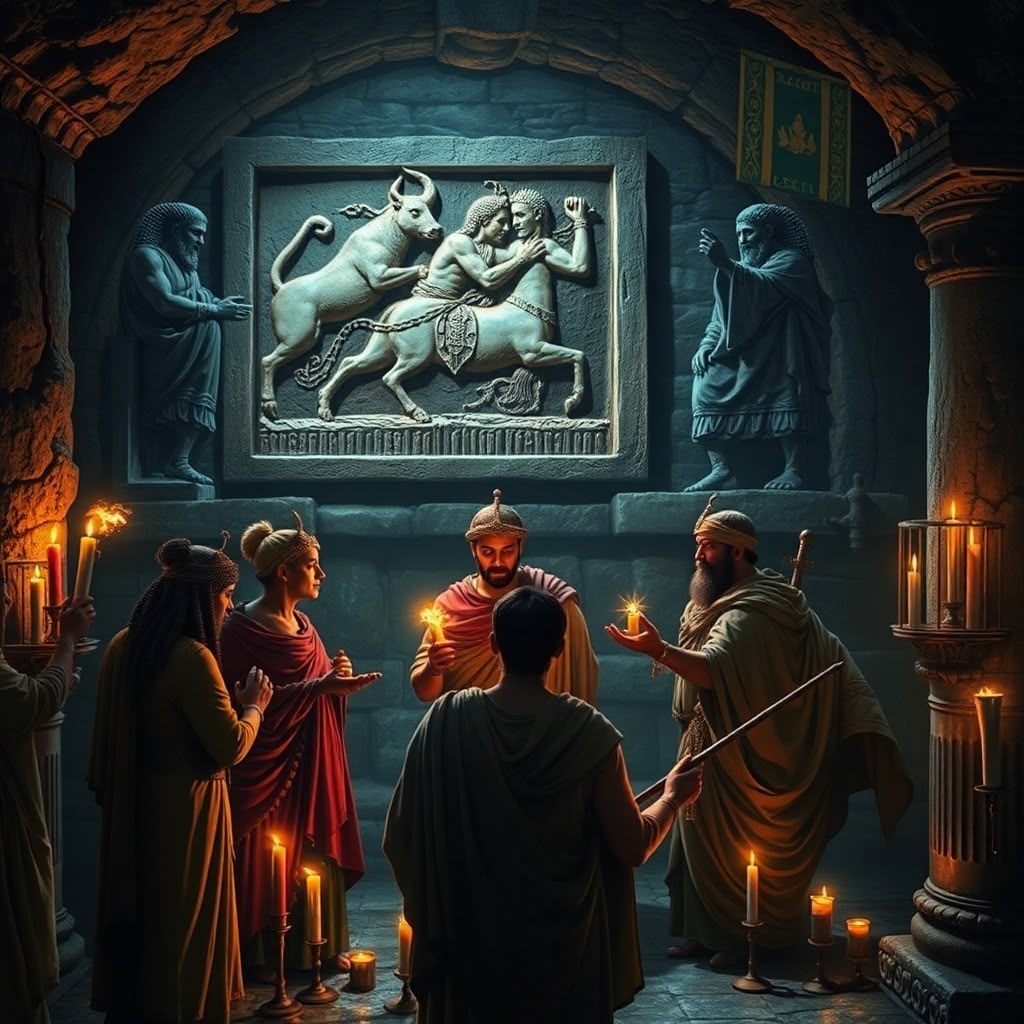
Cult of Cybele (Magna Mater)
The Cult of Cybele, also known as Magna Mater or the Great Mother, originated in Phrygia (modern-day Turkey) and was introduced to Rome during the Second Punic War in the 3rd century BCE. This cult centered on Cybele, a powerful earth and fertility goddess linked to mountains and wild nature. Her worship reflected themes of life, death, and rebirth, resonating deeply with ancient agricultural cycles.
Distinctive Features of the Cult
Distinctive features of this cult included its ecstatic rituals performed by the Galli priests. The Galli were eunuch priests who underwent voluntary castration as a sign of devotion and spiritual transformation. Their ceremonies often involved wild dancing, loud drumming, self-flagellation, and sometimes self-mutilation to induce trance-like states. These intense performances aimed to connect devotees directly with the divine energy of Cybele.
Social Marginalization of Followers
Despite official recognition by the Roman state, followers of the Cult of Cybele experienced considerable social marginalization. The unorthodox practices, especially the emasculation of Galli priests, clashed with traditional Roman values emphasizing masculinity and social order. Many Romans viewed the cult’s followers as outsiders or even subversive elements within society. This tension highlights how secretive religious movements could exist alongside but remain distinct from mainstream Roman religious life.
Personal Devotion vs Public Worship
The Cult of Cybele illustrates how intense personal devotion and ritual ecstasy formed a counterpoint to Rome’s structured public worship system.
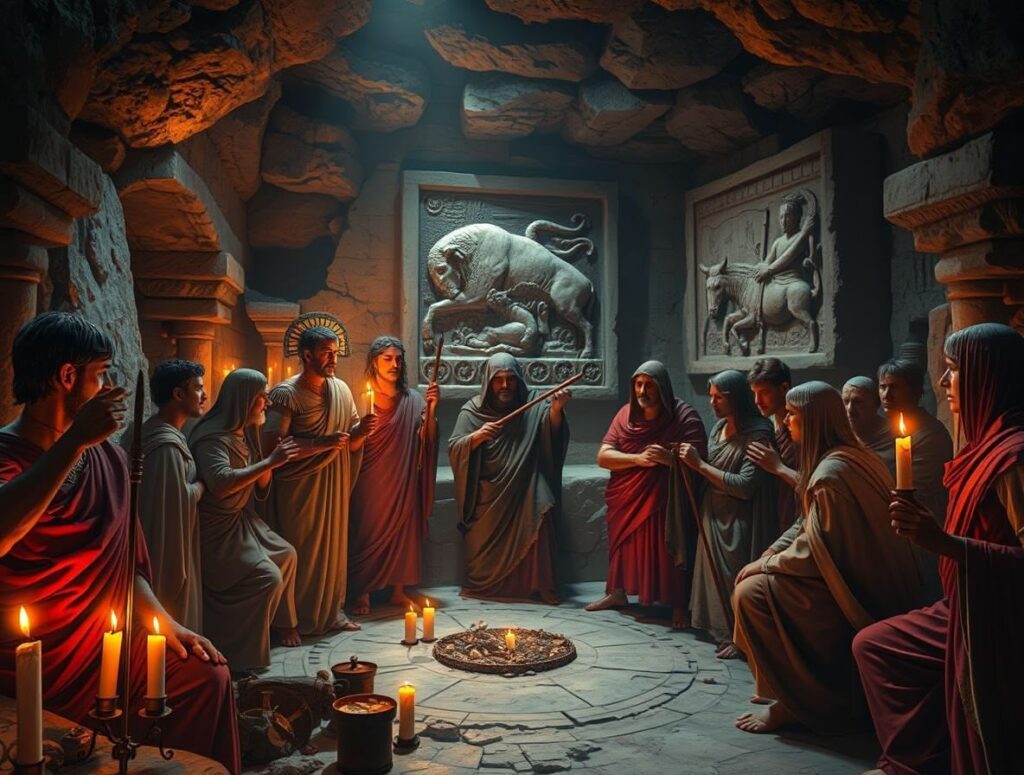
Mithraism
Mithraism originated from Persian roots and became popular in the Roman Empire around the 1st century BCE. Its growth paralleled the expansion of Roman military campaigns, making the cult particularly appealing to Roman soldiers and elites. The religion attracted followers with its focus on discipline, loyalty, and courage—qualities highly valued by both the army and ruling classes.
Mithraic Temples: The Mithraea
At the heart of Mithraic worship were the mithraea temples, small underground sanctuaries designed to resemble caves. These concealed spaces reinforced the secretive nature of this mystery cult and hosted elaborate initiation ceremonies. Membership was exclusively male, with initiates progressing through seven hierarchical grades, each associated with specific rites and teachings.
The Symbolism of Tauroctony
The Tauroctony myth holds great significance within Mithraism. This iconic scene portrays Mithras slaying a sacred bull, an act believed to bring forth life and cosmic renewal. Interpretations suggest it embodies themes of death and rebirth, which are central to the personal salvation promised by the cult.
Rituals and Brotherhood
Rituals often included communal meals, prayers, and symbolic gestures emphasizing brotherhood and spiritual protection. Mithraism’s structured secrecy and rich symbolism set it apart from other Secret Societies and Mystery Cults in Ancient Rome, offering members a close-knit community united by faith, ritual, and mutual trust.
Historical Context: The Birth of the Roman Republic
This period of religious change coincided with a significant political shift known as the birth of the Roman Republic, which marked the transition from monarchical rule to a republican system around 509 BCE. Understanding this transition is crucial for comprehending the complexities of Roman governance during that time and its lasting influence on modern political systems.
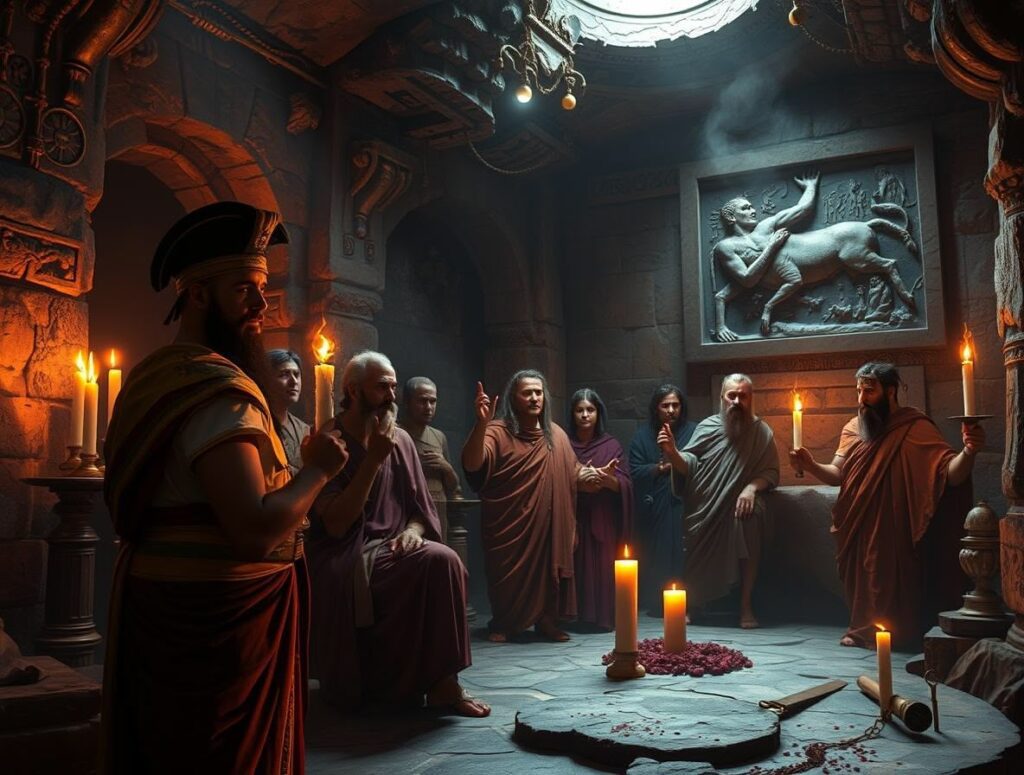
Cult of Isis
The Cult of Isis is one of the most influential and long-lasting mystery cults that came to Rome from Egypt. Worship of Isis began to spread in the Roman world around the 2nd century BCE and became very popular by the 1st century CE. Unlike many secretive groups that were limited by gender or social status, this cult stood out because it was inclusive, attracting both men and women from different social classes, including slaves and freedpersons.
Who Was Isis?
Isis was worshipped as a goddess who represented motherhood, magic, and protection. Her followers believed that through her cult, they could have a personal connection with the divine and receive salvation and eternal life—something that traditional Roman religions did not offer.
Ritual Practices in the Cult
The rituals performed by the Cult of Isis often included:
- Processions featuring sacred symbols like the sistrum (a rattling instrument) and the ankh (symbol of life)
- Music and chanting designed to invoke divine presence
- Daily ceremonies that awakened the statue of Isis within temples
- Secret initiation rites revealing hidden knowledge about life, death, and rebirth
This openness set it apart from more exclusive male-only groups such as Mithraism. The cult’s emphasis on compassion and personal devotion appealed widely across Rome’s diverse population, including both plebeians, who were vital to the fabric of Roman society, and patricians, the wealthy elite distinct from the working-class commoners.
The Impact of Rituals
Its rituals fostered a sense of community while providing spiritual comfort amid the uncertainties of urban life. Worship of Isis’s adaptability allowed it to coexist alongside official Roman state religion, even as it maintained its distinctive secretive character. This balance between public visibility and private mystery contributed to its lasting influence throughout the empire.
As we delve deeper into understanding this fascinating aspect of ancient Roman culture, it’s essential to explore the broader context in which this cult thrived.
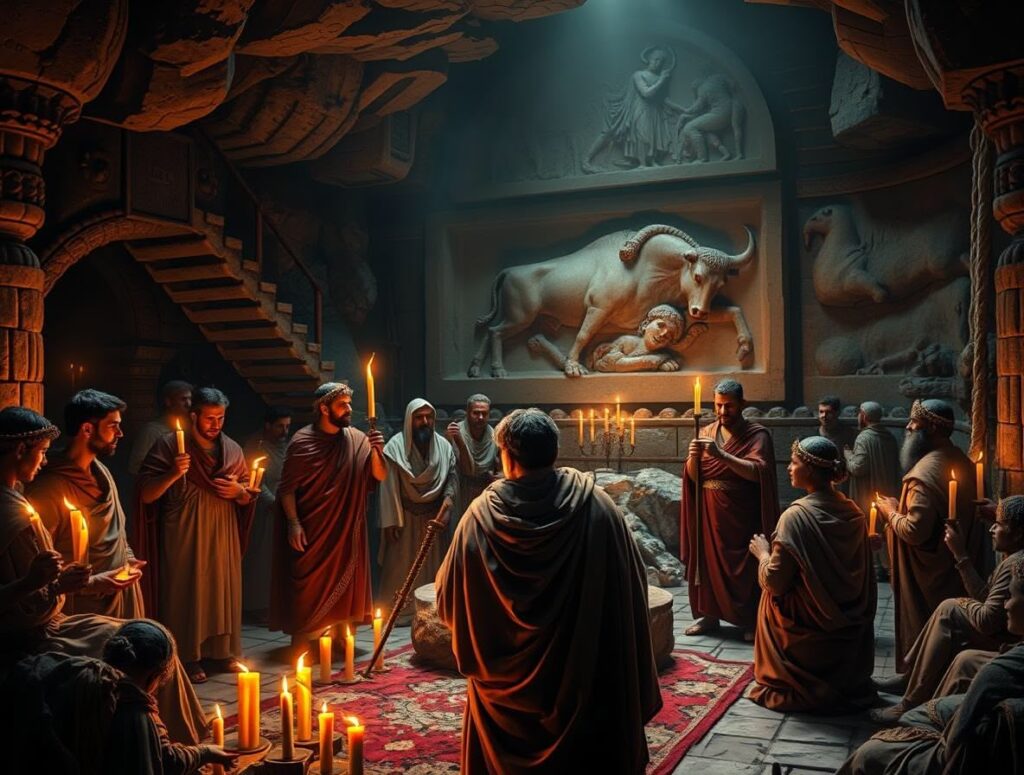
Influence of Eleusinian and Orphic Mysteries on Roman Religion
The Eleusinian Mysteries brought a profound Greek influence into Roman religious life. Centered on the goddesses Demeter and Persephone, these rites symbolized the eternal cycle of death and rebirth, deeply connected to agricultural fertility. Initiates underwent secretive initiation rites at Eleusis, experiencing rituals that promised a renewed spiritual existence tied to nature’s rhythms.
Key elements defining the Eleusinian Mysteries include:
- Death and rebirth symbolism: Persephone’s descent into the underworld and return to earth represented seasonal change and the hope for personal renewal.
- Secret initiation rites: Participants were sworn to secrecy about the ceremonies, which involved purification and sacred dramas reenacting mythological events.
- Promise of afterlife blessings: Initiates believed they would enjoy a better fate after death due to their participation.
The Orphic Mysteries drew from the myth of Orpheus, who ventured into Hades to reclaim his wife. This cult introduced ideas about the soul’s immortality and purification through ascetic living. Followers sought liberation from the cycle of reincarnation by practicing moral purity and mystical knowledge.
Important aspects of Orphic beliefs:
- The soul as an immortal entity trapped in a mortal body.
- Spiritual purification achieved through ritualistic practices and ethical conduct.
- Emphasis on personal salvation beyond traditional public worship.
Both Eleusinian and Orphic traditions enriched Roman spirituality by offering intimate, transformative experiences focused on life after death and inner renewal.
These mystical traditions played a significant role in shaping the spiritual landscape of ancient Rome, a civilization whose influence is still felt today. From its rise to its fall, the Roman Empire was not merely a political entity; it was a tapestry woven from diverse cultures, languages, and traditions.
In addition to these religious influences, other aspects such as Stoicism, which emphasized living in harmony with nature and practicing virtue, also shaped Roman thought significantly. Furthermore, the military might of the Roman Army played a crucial role in achieving victories across large areas, contributing to the empire’s growth and upkeep.
The legal foundations laid during this period, like those found in the Corpus Juris Civilis continue to influence modern law systems today. As we explore these facets of Roman history, it’s fascinating to see how they intertwine with our present-day society.
Dionysian Mysteries (Bacchic Cult) Influence on Roman Religion
The Dionysian Mysteries, also known as the Bacchic Cult, centered on the worship of Dionysus, the god of wine, fertility, and ecstatic frenzy. This cult distinguished itself by its emphasis on emotional release and breaking social conventions through ecstatic rituals. Unlike the orderly and duty-driven state religion, Dionysus worship embraced chaos and transformation as crucial spiritual experiences.
Key features of Dionysian practices include:
- Ecstatic rituals involving music, dance, and intoxication designed to induce altered states of consciousness.
- Celebrations called Bacchanalia, secretive gatherings marked by wild behavior that alarmed Roman authorities for their perceived threat to public order.
- Emphasis on personal liberation from societal constraints through communion with Dionysus.
Maenads, female followers of Dionysus, played a central role in leading these rites. They were known for their frenzied dancing and ecstatic possession during ceremonies. Seen as vessels of divine inspiration, Maenads symbolized the power of nature and emotional abandon inherent in Dionysian worship.
This cult’s secretive nature and intense rituals placed it firmly within the sphere of Secret Societies and Mystery Cults in Ancient Rome. Its focus on personal spiritual experience contrasted sharply with traditional Roman religious formalism, offering an alternative path to divine connection through ecstasy and communal celebration.
Suppression by Roman Authorities and Decline
Secret societies and mystery cults in Ancient Rome faced increasing scrutiny and opposition from Roman authorities, primarily due to their secretive nature and potential challenge to state control. Key measures included:
- Legal restrictions on cults: Various laws were enacted to regulate or outright ban certain practices deemed subversive or immoral, such as the Bacchanalia scandal of 186 BCE, which led to severe restrictions on Dionysian rites. These legal measures were part of a broader framework of Roman Law which has played a crucial role in shaping modern legal systems.
- Surveillance and persecution: Authorities monitored gatherings, arrested leaders, and sometimes executed followers suspected of conspiracies or threatening public order. This level of control was made easier by the extensive Roman roads network that facilitated movement across the empire.
- Gradual marginalization: Mystery cults lost official support as Christianity gained influence, undermining their social standing and recruitment.
The decisive blow came with Theodosius I’s decree in 392 CE. This imperial edict outlawed pagan worship across the empire, effectively banning all mystery cults alongside traditional pagan practices. Temples were closed or repurposed, sacred rituals prohibited, and adherents forced into secrecy or conversion. Theodosius’ policies accelerated the decline of these cults, marking the end of their public presence in Roman religious life.
Despite this suppression, the architectural legacy of Ancient Rome continues to inspire awe today. The Romans were not merely builders; they were innovators who transformed the architectural landscape of their time, creating structures that served as a testament to their power and cultural identity, as explored in this piece about Roman Architecture.
Additionally, while the mystery cults faced decline, other aspects of Roman society continued to thrive. The gladiatorial games remained a significant part of Roman entertainment culture. Gladiators were brave warriors admired for their skills in battle yet also victims of a complex social system. This duality is explored further in our article about Gladiators.
Influence on Early Christian Practices
Secret societies and mystery cults in Ancient Rome shaped several key aspects of early Christianity. Their emphasis on personal salvation and exclusive initiation rites offered models that early Christians adapted to form a distinct religious identity. This transformation was not only spiritual but also cultural, as seen in the art and culture of Ancient Rome which influenced various aspects of life including religious practices.
Key influences include:
- Resurrection Beliefs: Mystery cults like the Eleusinian and Dionysian Mysteries centered on themes of death and rebirth, which paralleled Christian teachings about Jesus’s resurrection and eternal life.
- Spiritual Renewal Concepts: Initiation ceremonies promising purification and spiritual transformation echoed in Christian baptism practices.
- Community and Fellowship: The secretive, close-knit nature of mystery cults provided a blueprint for early Christian communities fostering loyalty and mutual support.
- Ritual Symbolism: Shared use of sacred meals, such as the Mithraic communal banquet, influenced the Christian Eucharist.
Mystery cults offered alternatives to the state religion by addressing individual spiritual needs. Early Christianity absorbed and reinterpreted these elements, contributing to its appeal across diverse social groups seeking a profound, personal connection with the divine.
FAQs (Frequently Asked Questions)
What were secret societies and mystery cults in Ancient Rome?
Secret societies and mystery cults in Ancient Rome were religious groups characterized by secretive initiation rites and exclusive membership. They offered personal salvation and spiritual renewal through esoteric rituals distinct from the public state-sanctioned worship.
How did the Cult of Cybele (Magna Mater) influence Roman religious practices?
The Cult of Cybele, also known as Magna Mater, introduced ecstatic rituals led by Galli priests who often faced social marginalization. This cult emphasized intense spiritual experiences and contributed to the diversity of religious expression within Ancient Rome.
What role did Mithraism play among Roman soldiers and elites?
Mithraism was a popular mystery cult among Roman soldiers and elites, centered around the worship of Mithras. It involved secretive rituals performed in Mithraea temples and featured symbolic myths like the Tauroctony, fostering camaraderie and spiritual commitment within its members.
How did Greek mystery traditions like the Eleusinian and Orphic Mysteries influence Roman religion?
Greek mystery traditions such as the Eleusinian Mysteries, focused on Demeter and Persephone, and the Orphic Mysteries, based on Orpheus myths, influenced Roman religion by introducing concepts of initiation rites, death and rebirth symbolism, soul purification, immortality, and ascetic living.
Why were mystery cults suppressed by Roman authorities?
Roman authorities imposed legal restrictions on mystery cults due to concerns over their secretive nature and potential threat to state control of religion. Theodosius I’s decree notably led to the decline of pagan worship practices associated with these cults as Christianity became dominant.
In what ways did mystery cults influence early Christian practices?
Mystery cults influenced early Christian practices through shared themes such as resurrection beliefs and spiritual renewal concepts. These parallels provided alternatives for personal salvation that shaped Christian rituals and theological development during its formative years.

